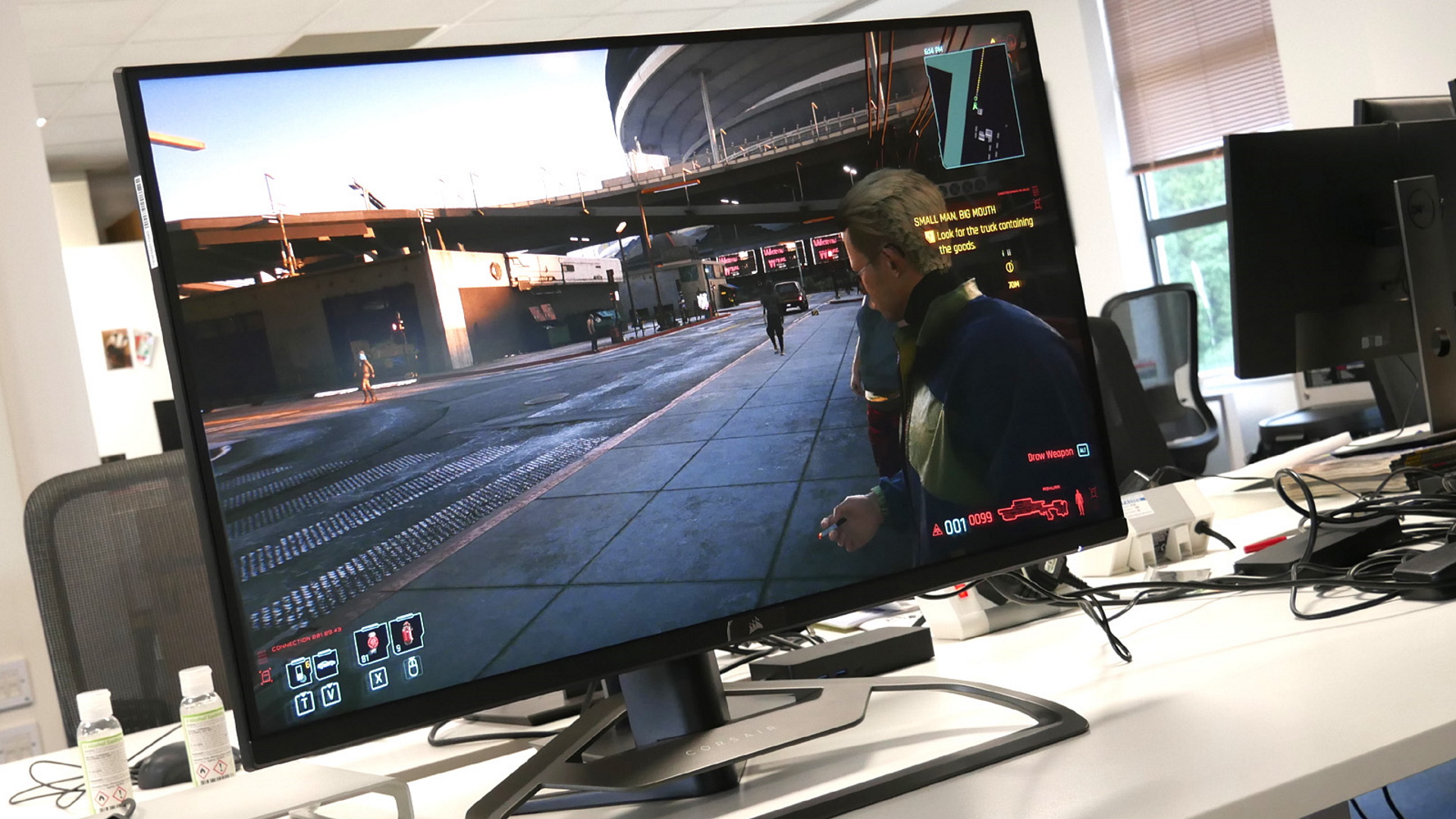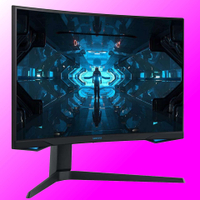Our Verdict
Corsair’s latest gaming panel is punchy, vibrant, and quick. The combination of 4K pixel density, zippy response, and 144Hz refresh makes for a stellar experience, provided the context is SDR games and content. It's a shame there are only 16 edge-lit dimming zones though, meaning HDR output is seriously lacking.
For
- Stellar 4K 144Hz visuals
- Strong feature set
- Good response
Against
- Only 16 edge-lit dimming zones
- Not the best viewing angles
- A lot of cash for what is ultimately an SDR panel
PC Gamer's got your back
Forget 49-inch silly-wide monitors and OLED TVs, the new Corsair Xeneon 32UHD144 is where it’s at for premium PC gaming. At least, that’s what it looks like on paper. Corsair’s new Xeneon gaming panel clocks in at 32 inches, packs a full 4K pixel grid, hums a 144Hz tune, and supports HDR via local dimming. That’s an awful lot of boxes ticked.
Peer a little closer and the 32UHD144 isn’t quite the slam dunk it initially appears, especially when it comes to HDR support. But hold that thought while we run through the finer details.
As you'd expect at this end of the market, Corsair has gone for an IPS panel. Corsair rates it at 1ms Motion Picture Response Time (MPRT), so in theory, it’s not quite as quick as the fastest IPS monitors, which claim 1ms by the more demanding Grey-to-Grey (GTG) metric. But response claims can be tricksy, so we’ll see about that.
As we said, the 32-inch panel rocks 3,840 by 2,160 pixels and runs at up to 144Hz. For the record, it can hit that refresh over all three input options—DisplayPort, HDMI, and USB Type-C running in DisplayPort Alt Mode. So, your connectivity options are amply covered. That USB interface, incidentally, supports power delivery so you can charge a laptop while driving the display. The catch is that it only supplies 15W, which isn’t even close to enough for even a moderate gaming laptop.
Getting back to that panel, it’s rated at 400nits for SDR brightness and 600nits HDR, the latter being required for the screen’s DisplayHDR 600 certification. HDR 600, of course, also demands some kind of local dimming. Unfortunately, Corsair has gone for the most basic of local dimming in the form of 16 edge-lit zones. Given this is a conventional IPS monitor with a mere 1,000:1 inherent panel contrast, that doesn’t bode well for the HDR experience.
There’s more unambiguously good news when it comes to panel quality thanks to the use of fidelity-enhancing quantum dot technology to enhance the backlight. The upshot is really broad colour coverage, with 100% of the Adobe RGB and 98% of the demanding DCI-P3 digital cinema gamut. Nice. Rounding out the image-related specs are AMD FreeSync Premium support and Nvidia G-Sync compatibility.
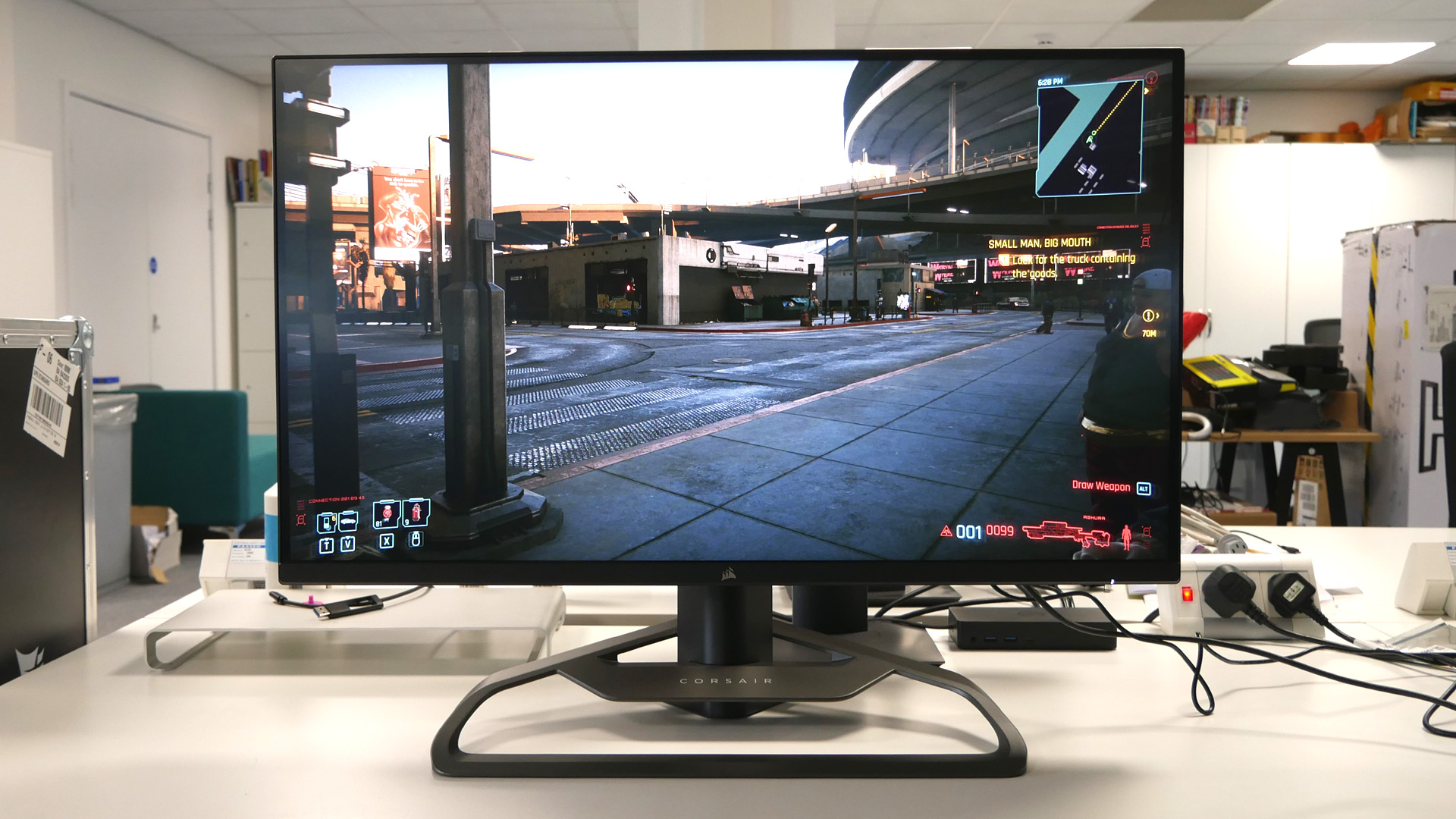
Screen size: 32-inch
Panel type: IPS
Resolution: 3,840 x 2,160
Brightness: 600nits HDR, 400nits SDR
Contrast: 1,000:1
Response time: 1ms MPRT
Refresh rate: 144Hz
Color coverage: 98% DCI-P3
HDR support: Vesa DislayHDR 600
Adaptive sync: AMD FreeSync Premium, G-Sync compatible
Connectivity: DisplayPort 1.4 x1, HDMI 2.1, USB Type-C
Price: $999 | £899
As for the Xeneon’s broader physical attributes, as tested it comes with Corsair’s familiar stand. It’s a hefty affair with an elaborate metal base. We don’t doubt the quality, but it’s not the most ergonomic solution and uses up a lot of desk space.
As it happens, the stand is actually optional. Pricing in the US is $999 with the stand and $899 without. In the UK the price with the stand is £899, but for now, there’s no pricing without. If you go without, the chassis is compatible with the standard 100x100mm VESA mount.
Anyway, the supplied stand includes a wide range of height, tilt, and swivel adjustment, plus good cable management and an additional so-called multi-mount at the top that content creators will appreciate for attaching cameras and lights. Overall, with slim bezels on three sides of the display, it’s a reasonably contemporary design, but probably not a screen you’d buy based on aesthetics.
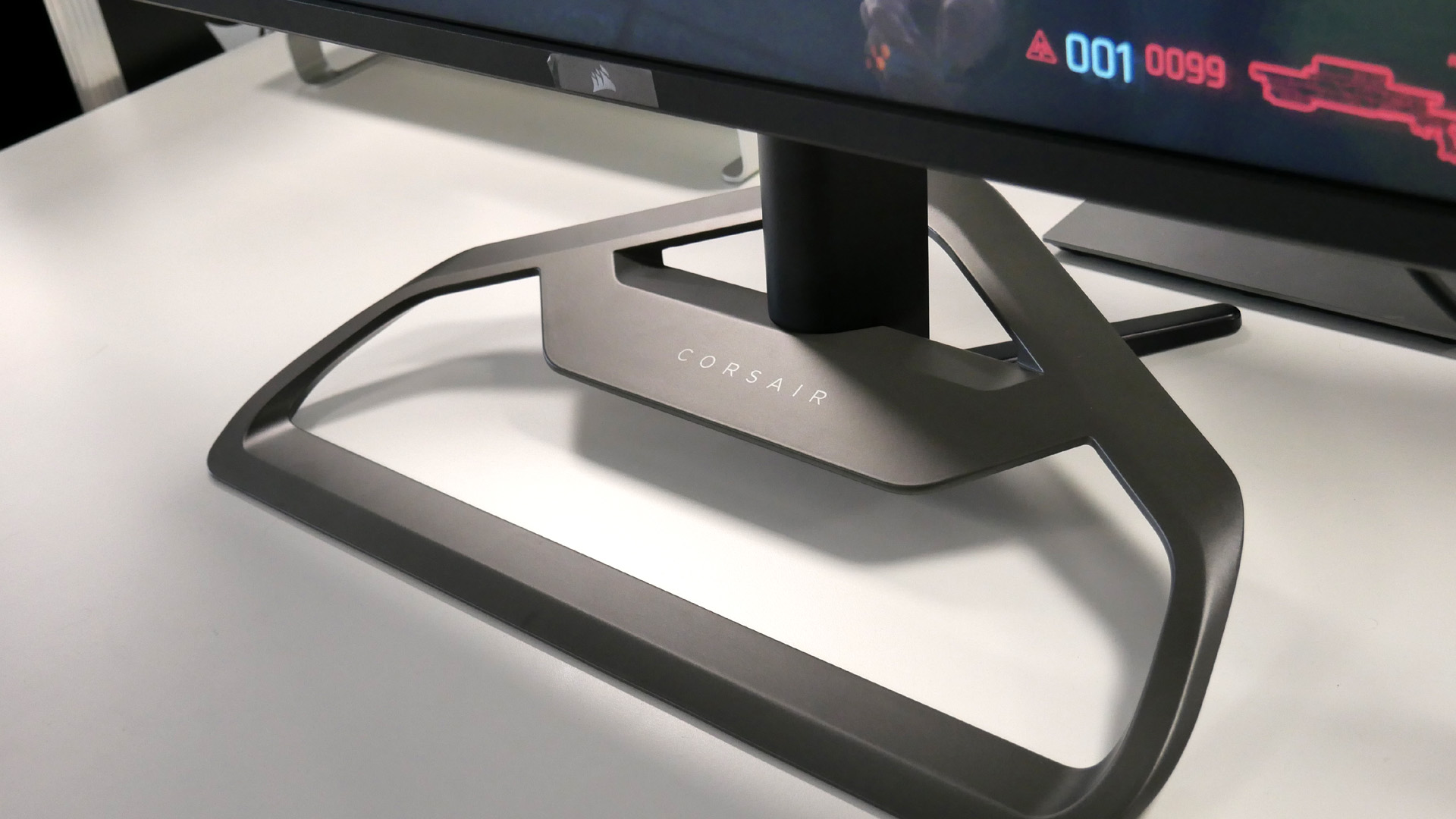
More importantly, however, would or rather should you buy it for the image quality and gaming experience? It’s certainly a punchy panel, even in SDR mode. We like the fact that the brightness is adjustable in all the gamut presets, including sRGB, Adobe RGB, and DCI-P3, too. There are no horrors when it comes to out-of-the-box calibration, even if the factory calibration is a little on the warm side, so only serious content creators will need to tweak the colour balance.
Sticking with SDR performance, jump into your favourite game and you’ll find the pixel response is plenty fast enough. Corsair provides three levels of user-configurable overdrive in the OSD menu for accelerating pixel response, plus a dynamic setting.
In both the dynamic and the fastest of the conventional settings, some overshoot and inverse ghosting is visible. But knock the overdrive back from “fastest” to “fast” and the result is really zippy response with no obvious ugliness. Add in the glorious detail of that 4K pixel grid and the 144Hz refresh and it’s one heck of a gaming experience. We like.
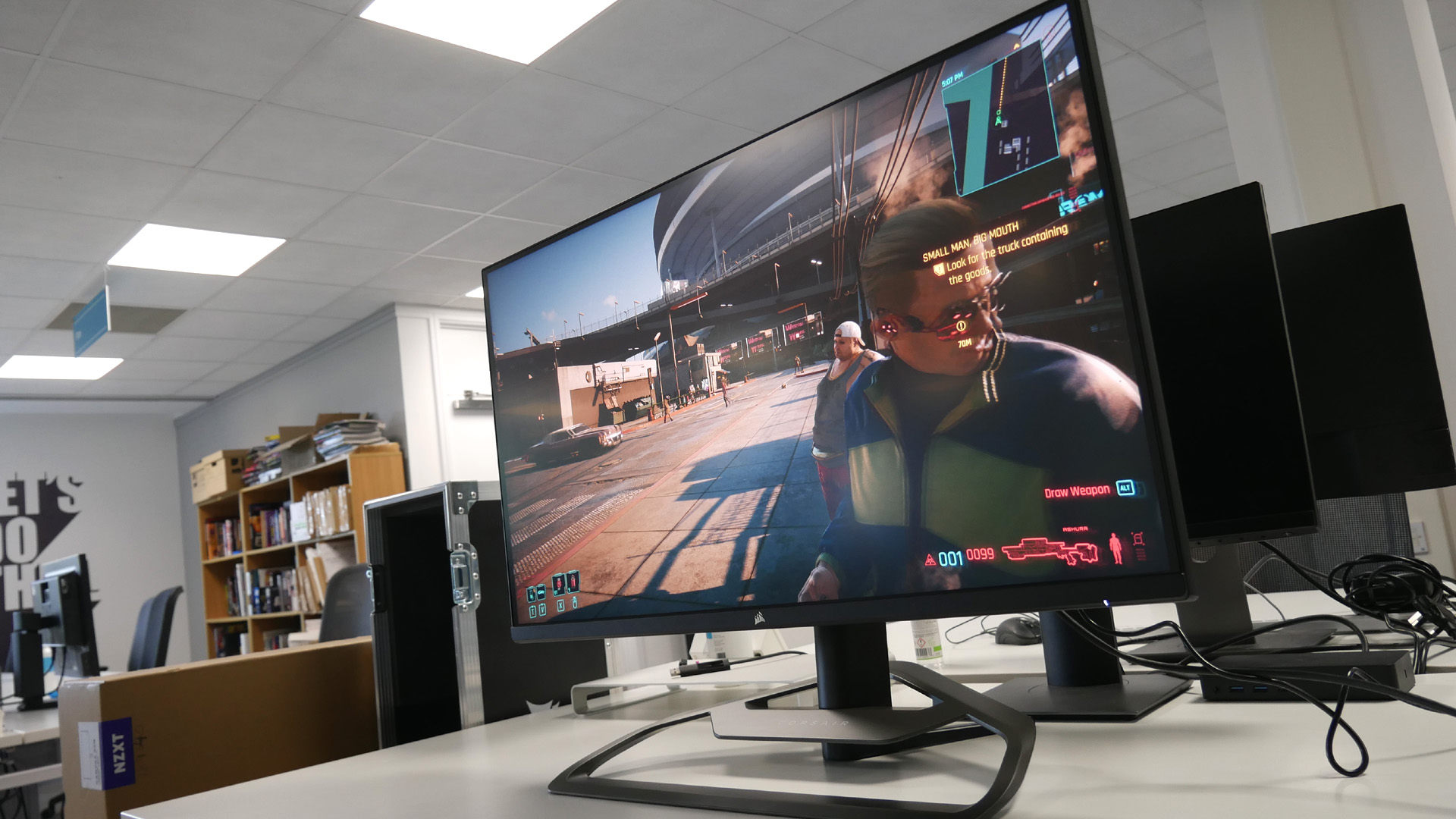
As ever with 4K monitors, of course, you’ll also need one heck of a graphics card to make the most of it. We’re talking Nvidia RTX 3080 at minimum. Hopefully, when AMD and Nvidia’s next-gen GPUs arrive later this year, true 4K graphics performance will become a bit more accessible. But, realistically, it’s going to be a few more years before 4K PC gaming achieves anything like mainstream attainability.
Less impressive is the Xeneon’s off-angle contrast. There’s a touch too much of that characteristic IPS glow when viewing from anything but dead-on, implying slightly aged IPS panel tech. But this monitor’s real weakness is HDR performance. The 16 edge-lit local dimming zones really are a pointless kludge and do not deliver a true HDR experience. OK, in a game like Cyberpunk 2077, the Xeneon probably does look a little more zingy running in HDR than SDR. But there’s not much in it.
Still, SDR content looks good with the panel in HDR mode, so you at least have the option of leaving it in HDR and dipping in and out based on the content. Panels, where SDR content is basically broken in HDR mode, are awfully tiresome and remarkably common.


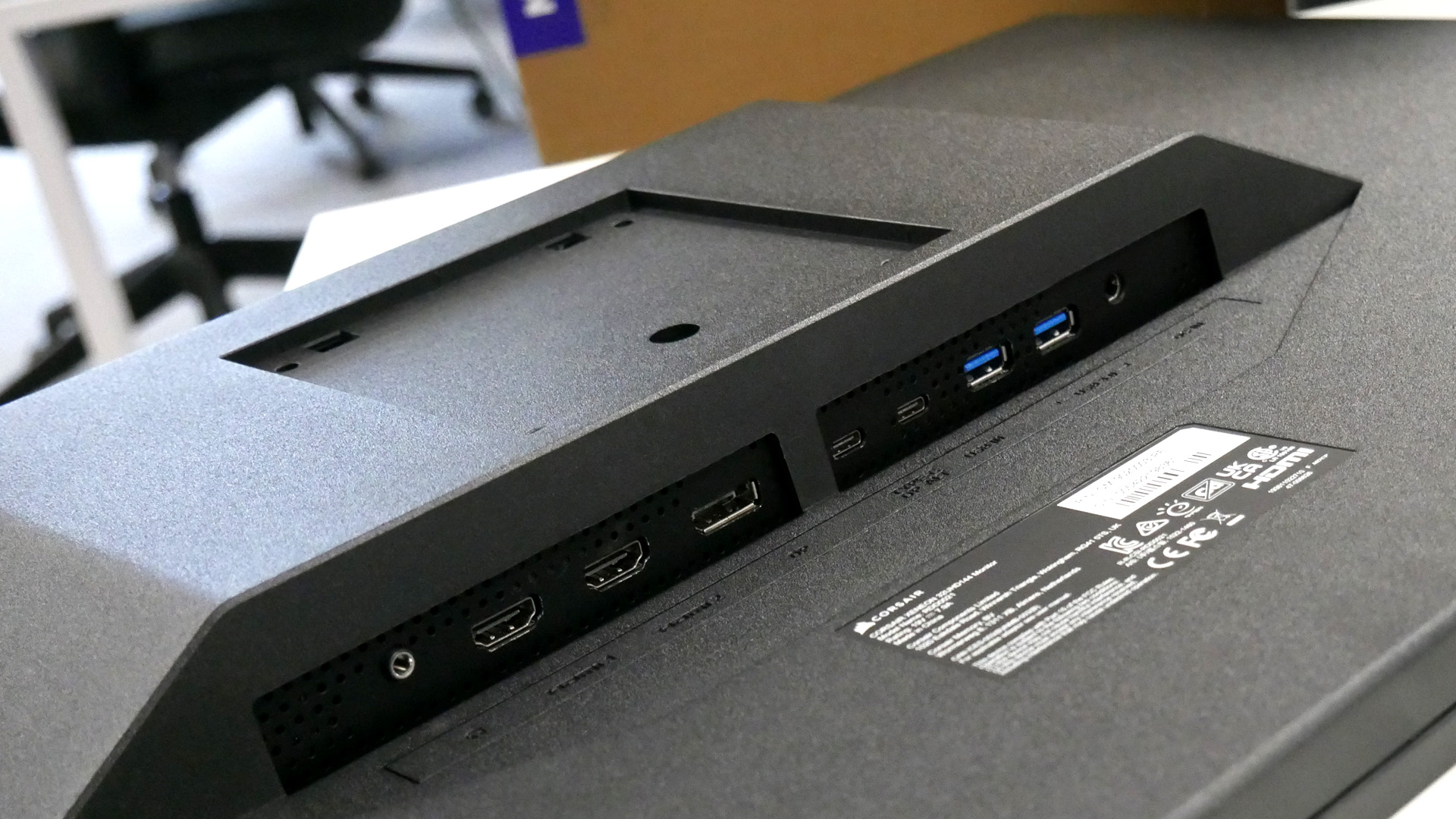
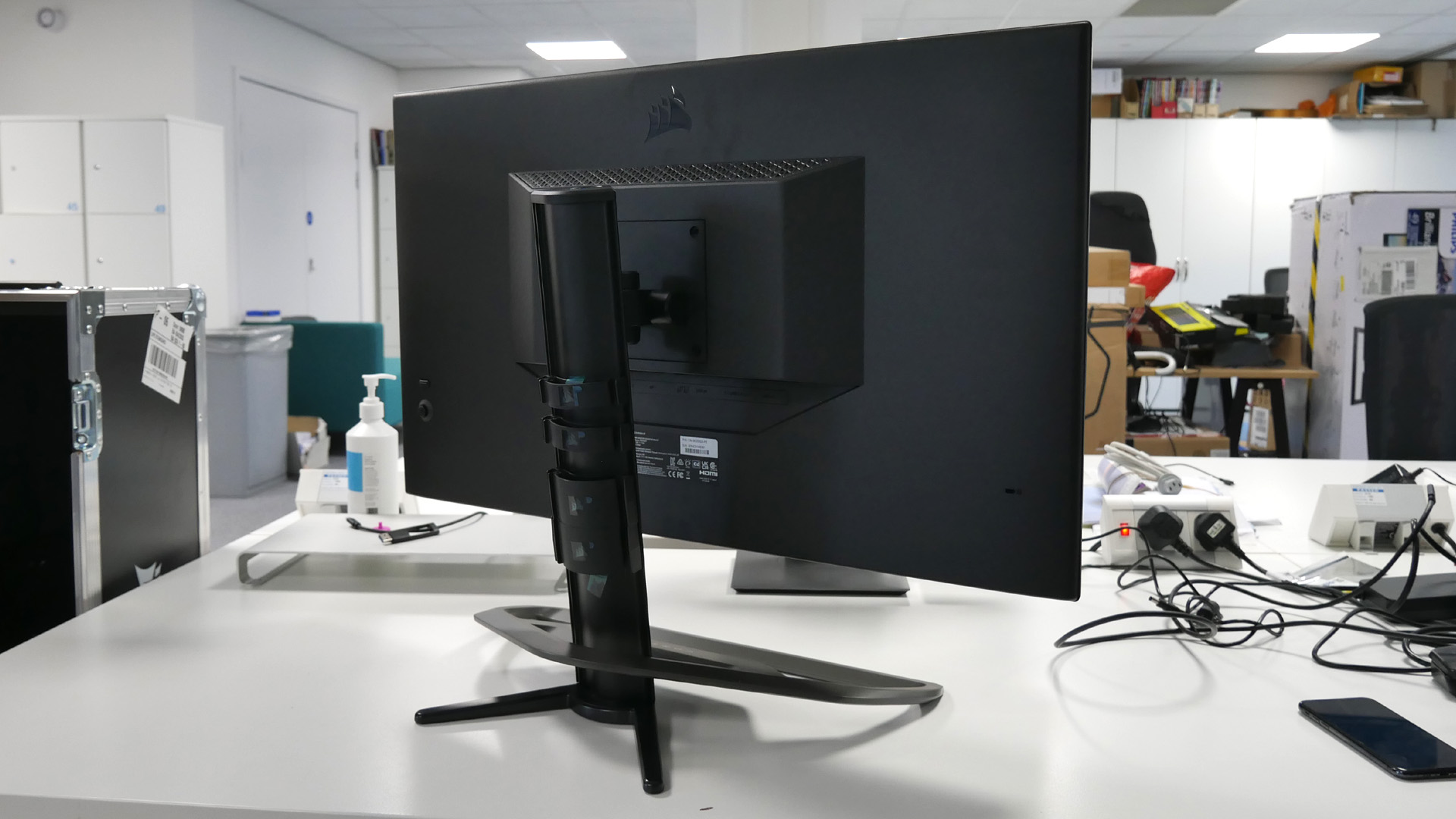
What, then, to make of Corsair’s latest 4K monitor? Just to contradict ourselves, arguably its greatest challenge is making a case for itself versus something like a 120Hz 4K OLED TV. That’s just about attainable for the same money as this out-and-out monitor and feels like far more screen for the money.
Granted, an OLED TV has drawbacks, not least of which are ergonomics. Do you really want a 48-inch monitor? But at the same time, the HDR performance of an OLED panel is on another level and the pixel response is miles ahead, too.
To be sure, the pricing of the Corsair Xeneon 32UHD144 is not out of whack with comparable PC monitors. We just think the whole market for this class of display is overpriced. Or it needs to up its HDR game. One or the other. As it is, this is a very nice 4K high-refresh SDR monitor, but not a true HDR panel. Is true HDR really too much to ask for around $1,000?
Best gaming monitor: Pixel-perfect panels
Best high refresh rate monitor: Screaming quick
Best 4K monitor for gaming: High-res only
Best 4K TV for gaming: Big-screen 4K PC gaming
Corsair’s latest gaming panel is punchy, vibrant, and quick. The combination of 4K pixel density, zippy response, and 144Hz refresh makes for a stellar experience, provided the context is SDR games and content. It's a shame there are only 16 edge-lit dimming zones though, meaning HDR output is seriously lacking.

Jeremy has been writing about technology and PCs since the 90nm Netburst era (Google it!) and enjoys nothing more than a serious dissertation on the finer points of monitor input lag and overshoot followed by a forensic examination of advanced lithography. Or maybe he just likes machines that go “ping!” He also has a thing for tennis and cars.
